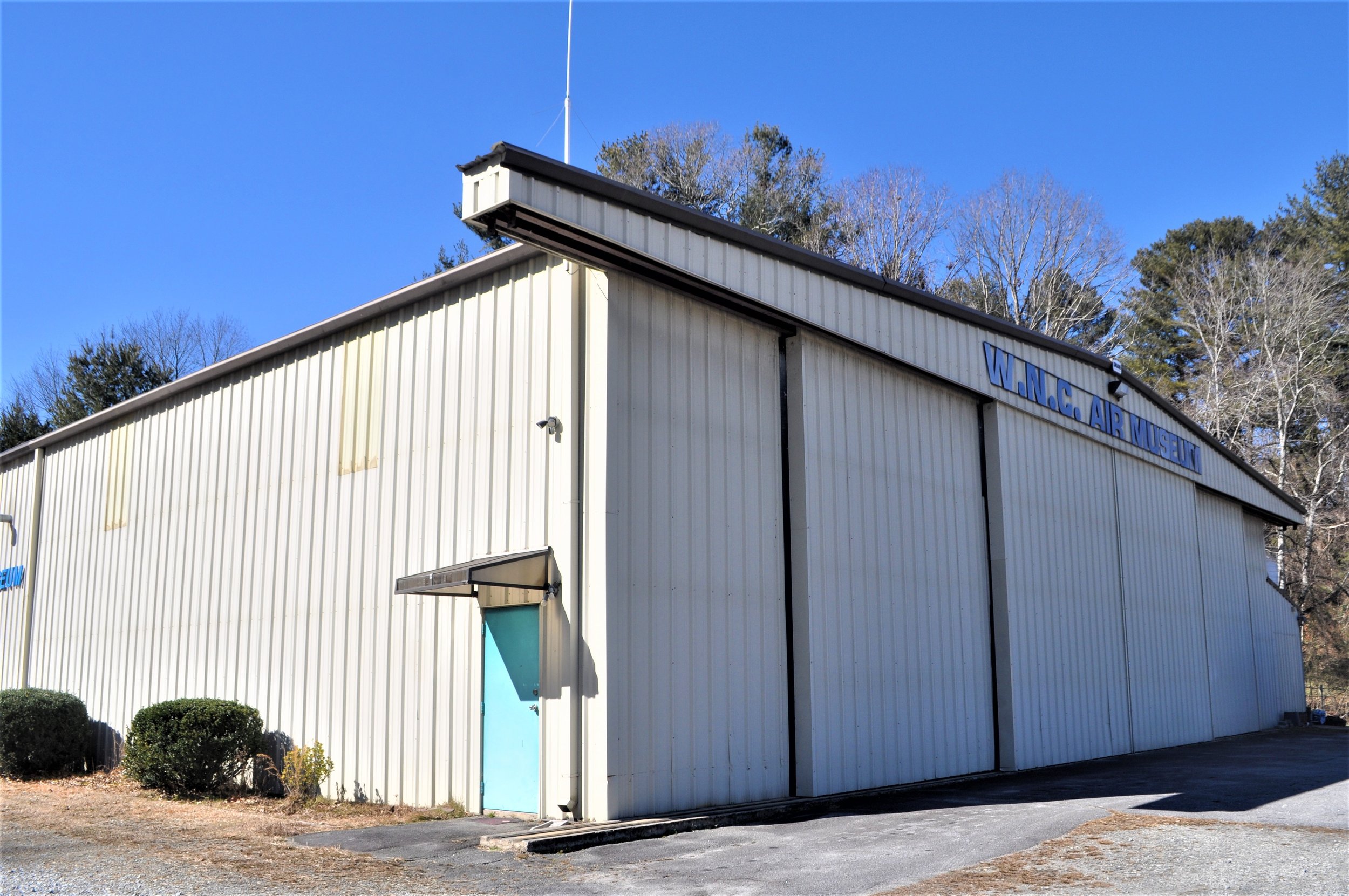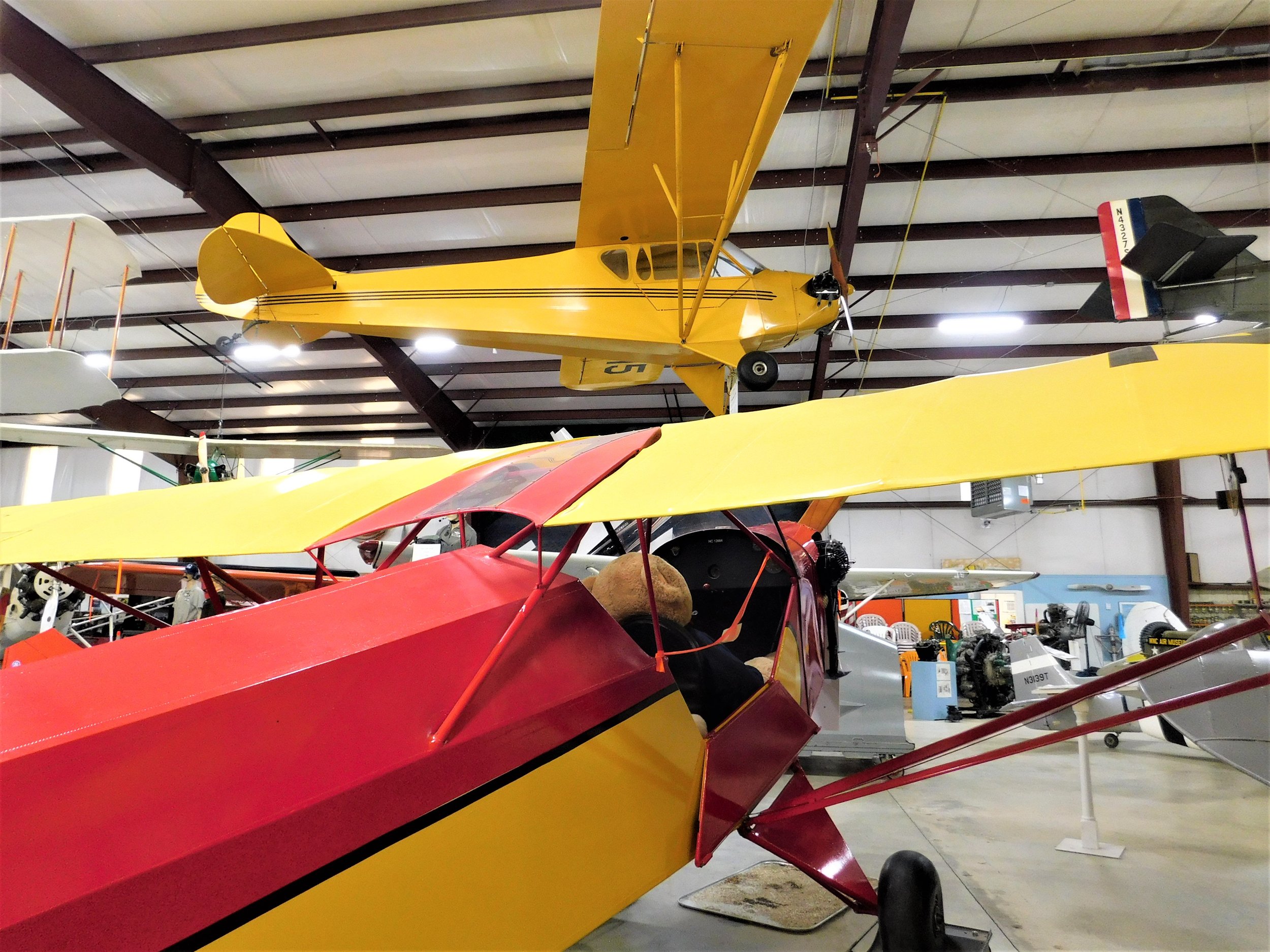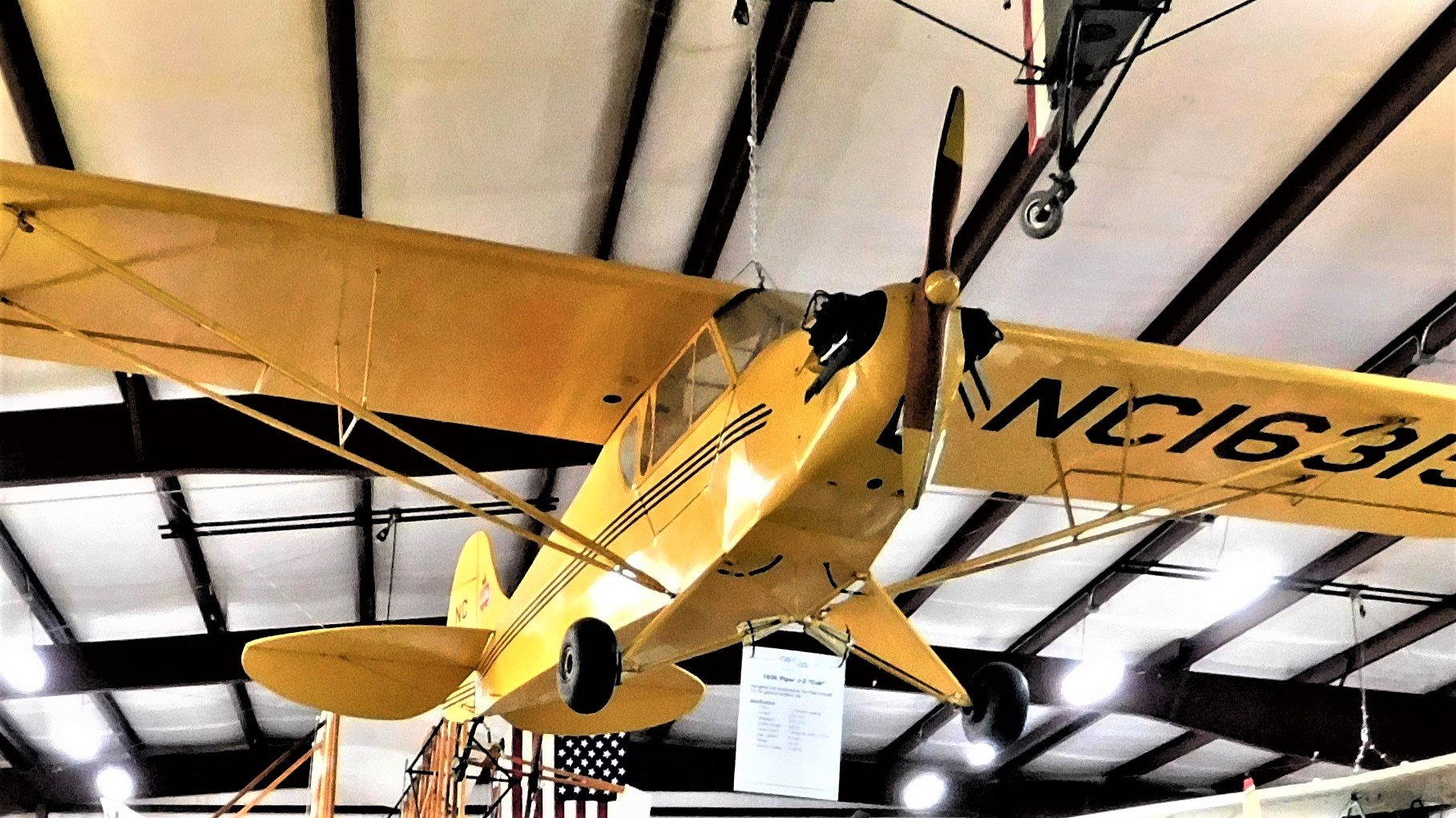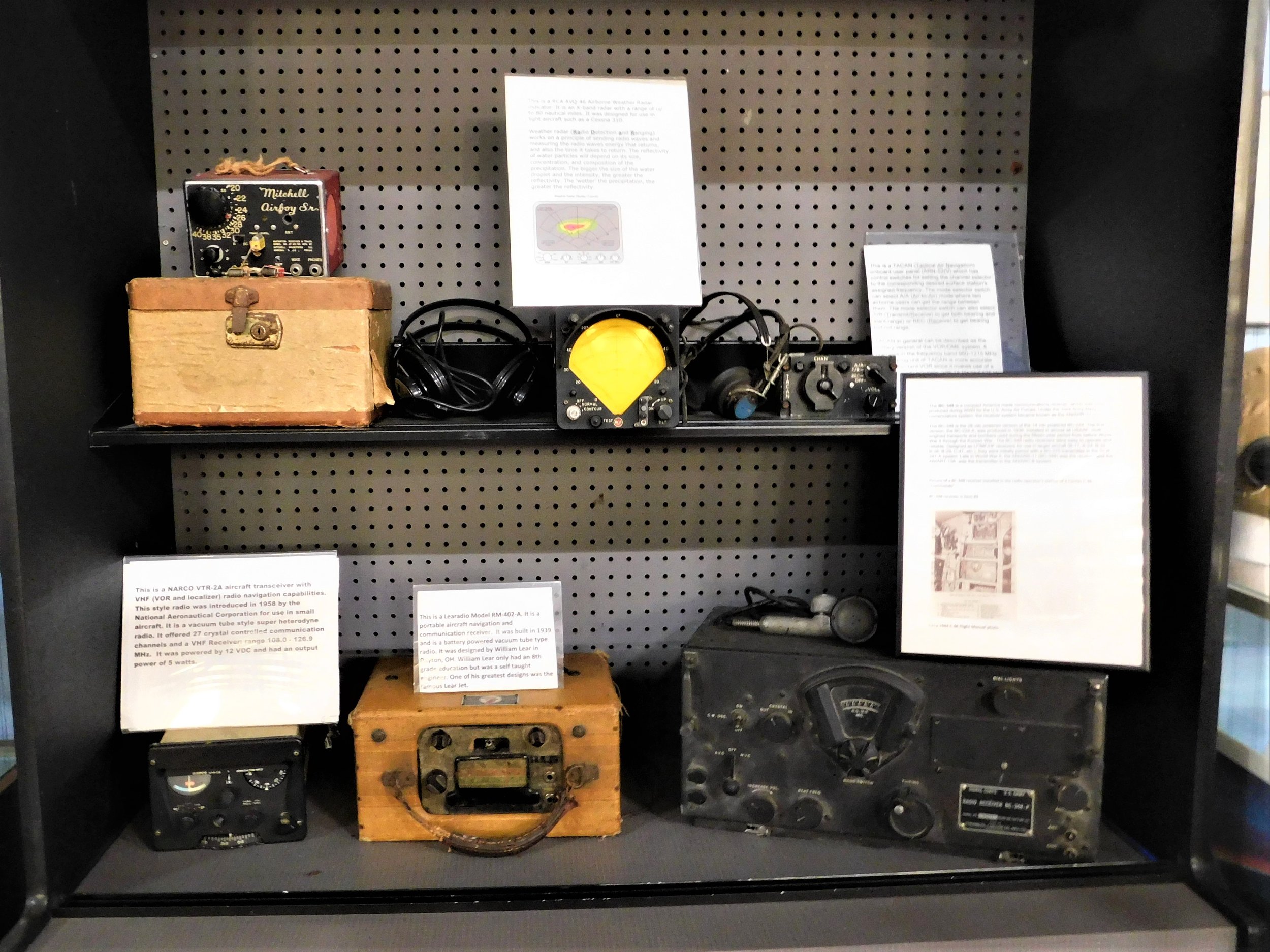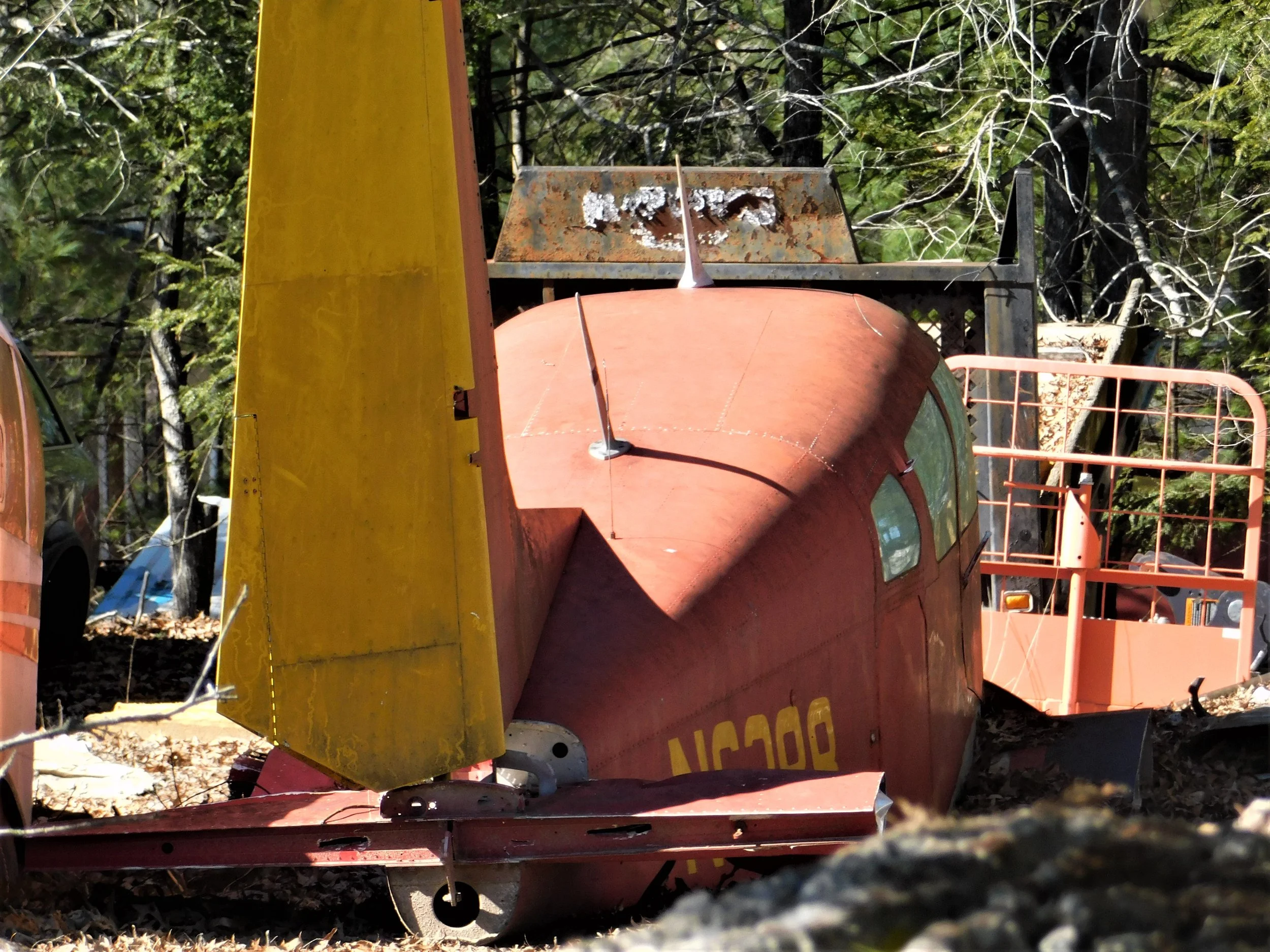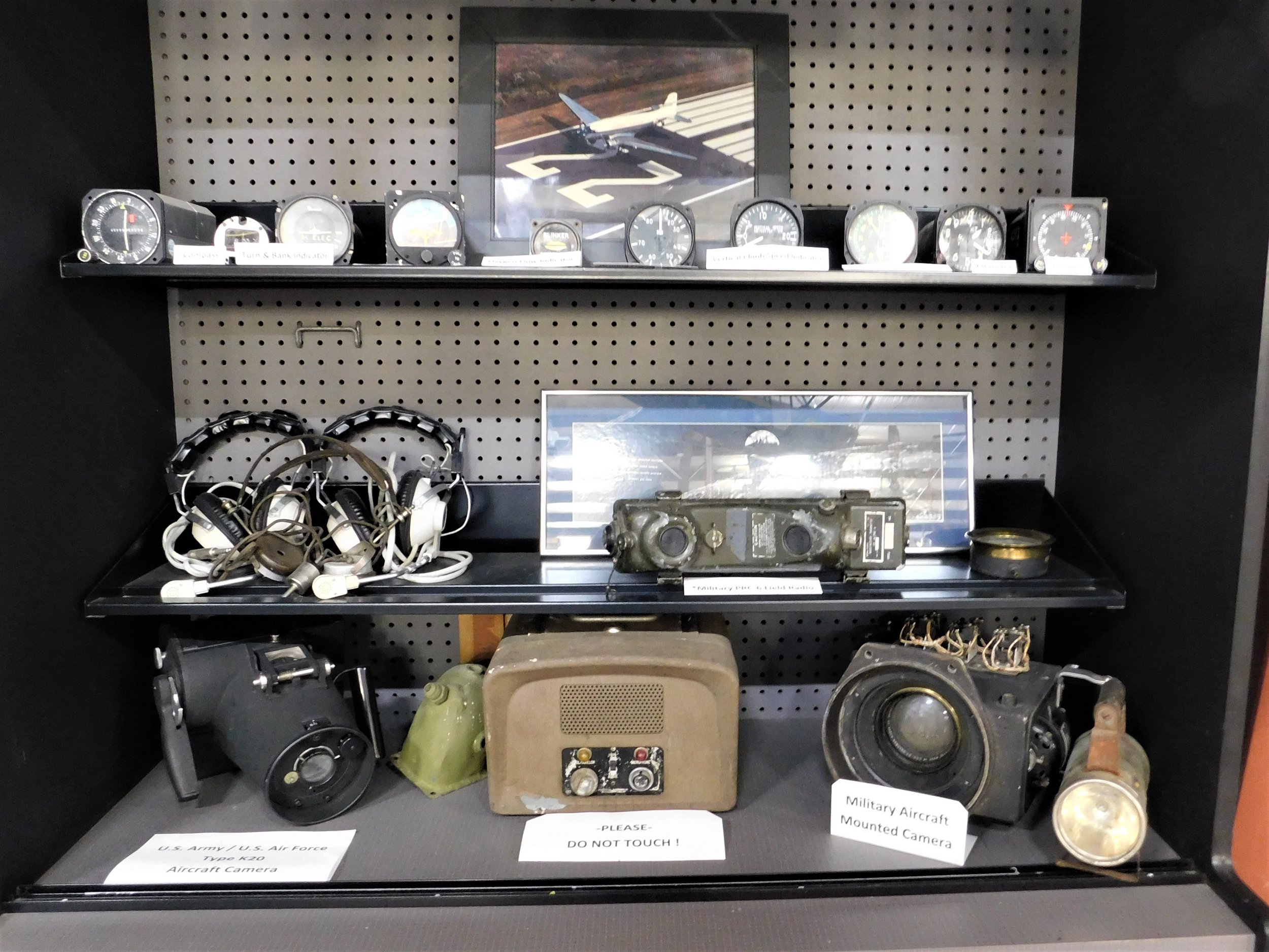The Western North Carolina Air Museum
Issue 32 A visit to The Western North Carolina Air Museum, Hendersonville, NC, March 2022
ADDED- OCTOBER 2024
In the late evening of September 26, 2024, Hurricane Helene hit the Big Bend area of Florida as a Cat 4 hurricane. As the huge storm tracked Northwest over Florida, South Carolina, Georgia, and into North Carolina, the winds lowered to a tropical storm category, but it was still causing massive destruction. The fast-moving storm left a large swath of damage and, reaching the southern Appalachians in North Carolina, it caused some of the worst destruction. The Western North Carolina Air Museum was heavily damaged. It will be a long time before the Hendersonville area recovers and thoughts of how do deal with the museum will come later. Visit the museum Facebook page for latest updates.
Added 12/5/2024 The museum is now open with reduced days and hours. See their Facebook page for current information. TB
https://www.facebook.com/WesternNorthCarolinaAirMuseum/
———————————————————————————————————————————————————-
In 1930, aircraft designer C. Gilbert Taylor wanted to build a training aircraft that was simple and inexpensive. The 1920s had been an amazing decade of advancement in aviation and there was a lot of interest in learning how to fly. Taylor had previously built the Chummy trainer but only two were built. They flew well, and Taylor made improvements to the design, including changing the engine to a Brownback “Tiger Kitten” engine. It is said that Taylor’s accountant suggested naming the new plane “Cub” to match the engine name. Unfortunately, the engine was underpowered, leading to a crash. Taylor tried a few different engines, including a radial, but finally settled (in 1931) on the newly developed Continental A-40 engine. He did, though, decide to stay with the name “Cub”.
In the early 1930s, aircraft started to be designated with letters as well as names and the plane was certified as a Taylor E-2 Cub in 1931. The original Cub was built in Rochester NY, but Taylor had been offered financial investments, as well as a former silk mill for a factory, to move to Bradford, PA. The company faltered because of the depression and soon declared bankruptcy. One of the Bradford investors, William T. Piper, bought the assets of the company and kept Taylor on as president. Piper and Taylor had a falling out (perhaps because the designation of the Cub was changed to J-2 without Taylor’s knowledge). By 1935, Piper fully bought out Taylor and the Cub, now designated J-3, became the iconic Piper Cub.
In the Western North Carolina Air Museum, you can view both an E-2 Cub and a J-3 Cub, creatively displayed near each other for comparison.
-------------------------------------
Founded in 1989, The Western North Carolina Air Museum was established "to preserve the aviation heritage of North Carolina in general and of Western North Carolina in particular." At first, just several aircraft were on display at the Hendersonville Airport until a temporary hangar was established in 1992. At that time construction of a permanent home for the museum was begun and the current location opened in 1993. There are plans to increase the size of the museum, including adding a maintenance hangar, which is currently under construction.
The small, but well laid out, hangar has a lot of aviation history on display depicting a number of eras of aviation. Many of the aircraft in the museum are maintained in flying condition, although, due to various financial considerations, none are currently being flown. As you walk among the planes, though, you will see drip pans under some of the engines. If you visit on a good weather weekend, you might get to see one of the planes being towed outside for a run up.
Every aviation museum has some type of unique aspect to it and I always look for that uniqueness. Here, at the Western North Carolina Air Museum, I noticed that most of the planes are displayed with the doors open and the interiors clearly visible. This is not as common at museums as it could be, and it offers a special experience for the visitor. Some museums have a few airplanes open to visitors and I always find that to enhance the tour. Here, however, just about every plane (at ground level) is open to look inside. Because these planes are all in original operating condition, there are some special and rather unique views of the cockpits available.
This beautiful 1948 Cessna 195 is a great example of what you can see here.
Displayed with the door open, it is easy to see inside the Cessna and view the original controls and instruments, all very much in operating condition. Notable is the unusual yoke set-up with dual controls operated via a single control column.
First flown in 1945, the Cessna 190 was a derivative of the pre-war Cessna 165 Airmaster. The Airmaster first flew in 1934 and is credited with revitalizing Cessna at the end of the Great Depression. After the war, Cessna made a complete re-design of the plane, switching from mostly wood and fabric construction to all-aluminum. One notable aspect of the 190 is that it was the first plane built in large quantities with flat, sprung-steel, landing gear legs, a design that became widely used. The pre-war Warner 7-cylinder radial of the 164 was replaced by a 240 HP Continental W670-23 radial. This first version was the 190 model. Some later models were equipped with a Jacobs R-755B2 radial. There were a variety of models with this engine and they were each designated as a Cessna 195. This particular plane, which was flown here from Nevada, was built as a 190 and later upgraded to a 195 with a turbocharged Jacobs rated at 350 HP.
The Piper J-3 Cub, mentioned in the opening, was a popular design and it sold well, even in the later part of the depression. As sales started to fall off, though, Piper was working on improving the aircraft. The result was the J-5 Cub Cruiser, seen here. The main changes in the design were an upgrade to a new, more powerful Continental A-80 engine, as well as a wider fuselage. The wider fuselage allowed the plane to be called a three-seater, although two adults were a very tight fit in the back seat. The J-5 first flew in 1939 and was produced from 1940-1946. Like the original Cub (military designation L-4), the Cub Cruiser was utilized by the military during World War-II. Some J-5s were built specifically for the military and a number of civilian models were pressed into service. The design was improved throughout the war and a number of military designations were used, but most were a variation of L-14 Army Cruiser.
As we saw at the Piper Museum (Issue 20), Cubs were even used at sea during WW-II. Two Navy LSTs (Landing Ship Tank) were outfitted to carry eight to ten L-4s.
Photo from the Piper Aviation Museum, Loch Haven PA Photo by the author
The ships were designed to launch the planes, but not land them- they would have to land on shore, sometimes in enemy territory. The first operational uses of the “Cub Carrier” were in 1943 in North Africa, and during the invasion of Sicily. Many ship-launched Cubs also participated in the Normandy invasion.
Before we leave our discussion of the Cubs, lets take a look at some differences between the Taylor E-2 and the Piper J-3.
At first glance it is easy to see the main difference between the two, the J-3 has a fully enclosed cabin. Besides having different engines, some other changes were that the J-3 had the vertical fin faired into the fuselage and the tail skid of the E-2 was replaced with a steerable tail wheel on the J-3.
There are not many E-2 Cubs still around and this E-2, serial number 36, is the seventh oldest known to exist. The restoration project of this E-2 Cub (as well as the Heath Parasol seen later) is described on a page of the museum website.
http://www.westernnorthcarolinaairmuseum.com/projects-1.html
The World War I era is well represented here by a number of interesting aircraft including this 1915 Sopwith Baby and 1915 Nieuport 11 C1 Bebe (hanging above). Both planes are replicas, but they are of high-quality construction and give the visitor a great look at planes of WW-I vintage.
The Sopwith is a full-scale replica of the aircraft built in 1915 by the Sopwith Aviation Company for the Royal Navy. There were 368 of the type built and they were used as a scout and bomber aircraft. They operated from a variety of types of ships including seaplane carriers, cruisers, and minesweepers. Their primary role during the war was early detection and tracking of Zeppelins approaching England. They were also used to track German fleets. The only known original Sopwith Baby was built from parts of several airframes and is on display at the Fleet Air Arm Museum in England.
The Nieuport 11 Bebe is a 7/8 scale replica of the French built fighter. Arriving on the scene in 1916, the Nieuports helped end the dominance of German Fokkers, known as the “Fokker Scourge”. The Nieuport is a sesquiplane, with a lower wing that is much smaller than the upper wing.
This configuration produces less drag and allows better visibility for the pilot. There is also just one surviving original Nieuport 11, which is in the Musée de l'Air at le Bourget in Paris.
The museum has made the most of the limited space available by hanging a number of aircraft from the ceiling. This grouping of WW-I aircraft is particularly well laid out
Turning to the period between the wars, we again find a nice representation of aircraft, including this 1928 Heath Parasol.
In early 1909, Edward Heath built his first aircraft in his family’s machine shop in New York. His first flight in the plane resulted in a broken landing gear, but he was hooked on aviation. He went to work for Glen Curtiss as a mechanic, and, by 1912, he had founded his own aircraft company. After WW-I, he became a successful air racer, while continuing to operate his aircraft company, which by then specialized in parts distribution. In 1926 he returned to aircraft design, coming up with his Parasol, using the wing from a WW-I fighter (the name Parasol comes from the fact that the fuselage hangs from the wing, rather than being attached to it). Heath’s design was simple and inexpensive to build and plans for it were published in several magazines in 1929 and 1930. There were a number of homebuilt designs that came on the market in the 1920s, but Edward Heath sold over 1,000 of his Parasol kits and is widely credited with popularizing the idea of homebuilt aircraft.
This Curtiss Robin is another representative of the era between the wars and is a plane we have seen before in this series (The Museum of Flight, in Seattle, Issue 12). First flown in 1928, over 760 Robins were built. They were originally powered by the Curtiss OX-5 V-8, many of which were still available, and cheap, after WW-I. This Robin, a 1930 4C-1A, is a four-seat version powered by a Continental W-670. Only 11 of the 4C model were built. This Robin is on loan from Mrs. Elizabeth Nichols, who flew it with her late husband, Red, for many years.
Once again, we get to see a great period interior of the Robin, in operational condition.
As in most aviation history museums, the Western North Carolina Air Museum has numerous artifacts on display. And like many museums they are mainly displayed around the walls of the museum, in attractive, but random placing.
An interesting companion to the WW-I aircraft we have seen is this collection of machine guns from that era.
The development of the airplane during World War I was extraordinary. The first aircraft ever purchased by the military was the 1909 Wright Flyer.
1909 Wright Flyer. Photo Courtesy of the Smithsonian Air and Space Museum
This aircraft was still very similar to the first “Flyer” flown by the Wright Brothers in 1903. The rapid developments in aviation between 1909 and 1914 happened mostly in Europe and in those five years, the design of airframes and aircraft engines changed drastically. By the start of the war planes had enclosed fuselages and air-cooled rotary engines. What had not yet developed, though, was the use of arms in aircraft, for either offense or defense. The original mission of planes during WW-I was planned to be for scouting and that is how they were designed. In 1914, pilots of both sides would wave to each other while flying observation missions. It didn’t take long, however, for pilots to realize that there were better uses for their aircraft and they began shooting hand guns and rifles at each other. This quickly developed into using machine guns. At first the machine guns were mounted on the upper wing, to fire over the propeller. That method was not very accurate and pilots tinkered with the idea of shooting through the prop. The leading edge of the wooden props were covered with steel, but the method had obvious limitations, not the least of which was shooting off your own prop. By 1915, the synchronized (or interrupter) gun was developed. This system, credited to Anthony Fokker, involved a mechanism that did not allow the machine gun to fire when a blade of the prop was passing by. The system was first installed on Fokker aircraft in 1915-16, which let to German dominance (The “Fokker Scourge” mentioned earlier). Allied manufacturers soon caught up and things evened out.
Update- reader John R. pointed out that there is a subtle difference between an interrupter and a synchronizer. Fokker is credited with the interrupter, while the British Constantinesco is credited with the hydraulic synchronizer gear of 1917.
The three machine guns on display represent U.S., British and French designs.
The Lewis gun was invented by U.S. Army colonel Isaac Newton Lewis in 1911. In 1912, it was the first machine gun fired from an aircraft, a Wright Model B Flyer. Lewis was unable to sell his invention to the U.S. Army (probably because of political differences) and so he went to Europe to develop and manufacture what would become a very successful gun which was used all the way to the end of the Korean War. Its first installation on an airplane was on a Vickers F.B.5 "Gunbus", in 1914.
Benjamin B. Hotchkiss was another American who moved to Europe to establish a machine gun manufacturing company. Established in France at the turn of the century, Hotchkiss et Cie produced a number of successful machine guns. In aviation, they were mainly used on French aircraft.
In 1896, the British Vickers company purchased the Maxim company, and its machine gun design. They made several modifications and improvements and, like the other two machine guns, the Vickers remained in service for many years. Its first installation on an aircraft was on the Vickers E.F.B.1 biplane, in 1913.
This cabinet contains a selection of early radios, each well described. Included is a Narco VTR-2A VOR unit and an RCA AVQ-46 weather radar. This is one of those museums where you could spend hours reading and learning about numerous aspects of aviation history.
There are several well-known people who have been associated with the museum.
Photo Courtesy of the Western North Carolina Air Museum
While campaigning in 1992, President George H. W. Bush visited the museum to see a WW-II era Stearman that was on display at the time. President Bush, like so many WW-II pilots, learned to fly in a Stearman. He wasn’t deterred by the rainy day, and enjoyed viewing the Stearman he had come to see.
Lieutenant Colonel Robert Morgan, the well-know pilot of the legendary “Memphis Belle” was a native of Asheville, NC and a member of the museum. After reaching the required 25 bombing missions, the Memphis Belle and its crew were selected to make a tour of the U.S. to promote the sale of war bonds. When visiting his hometown, Colonel Morgan flew a low pass over downtown. To onlookers it appeared as if the plane was too low and about to crash. At the last second, Morgan put the plane in a 60-degree bank and flew between the courthouse and city hall.
There is a memorial marker at the location of the famous flyby the of the Belle.
This 1942 GPW Jeep was built by the Ford Motor Company. It is painted in the markings of the 91st Bomb Group known as “The Rugged Irregulars”. The 91st was the unit of Colonel Morgan and his Memphis Belle.
Also representing the WW-II era is this ¾ scale “Sportfire” (there is also a ¾ scale P-51). The Spitfire replica is powered by a 1700cc VW “Aerovee” engine and has a top speed of 140 MPH.
Shortly after the end of World War II, Cessna introduced two new models, the C-140 and the C-170. The C-140 was a 2-seat trainer and the C-170 was a four-seat version. The first models had fabric covered wings, but were fairly quickly updated to all-metal aircraft. Over 5,000 of the C-170s were produced. Production ended in 1956 when the Cessna 172, a tricycle gear version, was introduced. The 172 became the most produced aircraft in history, with over 44,000 built, and they are still in production today.
Looking into the cockpit of the 1954 Cessna 170B, and comparing the panel to earlier planes we have seen, clearly shows the evolution of light aircraft instrumentation.
There are many beautiful aircraft in this museum, but I’m going to finish up with my choice for the most attractive- this 1946 Fairchild 24-R. First flown in 1932, during the depth of the depression, the Fairchild 24 was designed to be rugged, reliable, and easy to fly. To save production costs, a number of parts from the automotive industry were used, such as window roll ups and brake parts. The popular Fairchild 24 remained in production from 1932 to 1948.
The design and coloring of the instrument panel makes this plane attractive inside and out.
————————————————————————
The Western North Carolina Air Museum website describes the museum this way:
“Set beside an active airport - we are more than just a place to look at planes. We're a place to relive a moment in time that is rapidly passing away. You won't find airplanes under glass. You won't find velvet ropes to keep you away. You won't find guards and ticket sellers and concessionaires. You'll only find airplanes and people who love them.”
I can’t say it better than that- a great place to visit!
———————————————————————
A special thanks to Docent Robert Gardner who gave me a tour of the museum and answered questions during my research.
A few other “thanks” that I should add to all of my blogs. My son Mark and his wife Taylor helped me do the initial design of the blog and website; my son Eric is always helpful with technical questions; my son AJ not only offers technical advice, but is very generous with offering rides to museums in his Baron; and my daughter-in-law Angela often has valuable input and suggestions. My brother Mike edits the blog each month with very valuable input. Above all, my wife Sheri provides support and encouragement and often accompanies me on museum visits. A huge thanks to everyone.
——————————————————————
——————————————————————
PLANNING YOUR VISIT
Hours of Operation
April - October
Wednesday 12:00 noon - 5:00 pm
Saturday 10:00 am - 5:00 pm
Sunday 12:00 noon - 5:00 pm
November - March
Wednesday 12:00 noon - 5:00 pm
Saturday 12:00 noon - 5:00 pm
Sunday 12:00 noon - 5:00 pm
Admission and Parking are free. Group tours welcomed!
Closed: Christmas, Easter, 4th of July, Memorial Day and New Years Day
FLYING IN
Hendersonville Airport (0A7) is a small, privately owned airport with a 3000’ X 40’ wide runway (15/33). There are no services or approaches. You can park near the museum on the southeast end of the airport.
LOCAL ATTRACTIONS
The town of Hendersonville has a number of other historic attractions as well as a restored downtown area with restaurants, antique shops and other interesting stores.
https://www.hendersonvillenc.gov/visit-downtown
WHERE TO EAT
There are many restaurants in the downtown area, which is about 10 minutes away
SUGGESTED READING
My brother Mike suggested this month’s entry, “Ferry Pilot” by Kerry McCauley. It is the autobiography of a pilot who ferried light aircraft, solo, across the Atlantic, Africa, and many other isolated parts of the world. It is fascinating reading about a type of flying that is seldom written about. Half way through the book, McCauley has encountered so many mechanical problems and dangerous weather situations that you can’t help think- why didn’t this guy try a different line of work? But if he had, we wouldn’t have this great book to read! Thanks Mike!
MUSEUM WEBSITE
http://www.westernnorthcarolinaairmuseum.com/
UP NEXT
Shannon Air Museum, Shannon, VA
MUSEUMS ARE WHERE YOU FIND THEM
This segment is dedicated to finding interesting aviation artifacts that are in public view- but not in an aviation museum. If you see one send a photo!
We didn’t have to search far for this month’s entry. While I was touring the museum, my wife Sheri took our dog Henley for a walk. Not far from the museum she came across a house with a variety of ‘unrestored’ planes in the yard, as well as a few cars. I expect there are elaborate plans underway to restore these classics!
———————————-
GALLERY
click photos to enlarge
Issue 32 Copyright© Aviation History Museums, 2022. All rights reserved.
Except where noted, all photos by the author.
